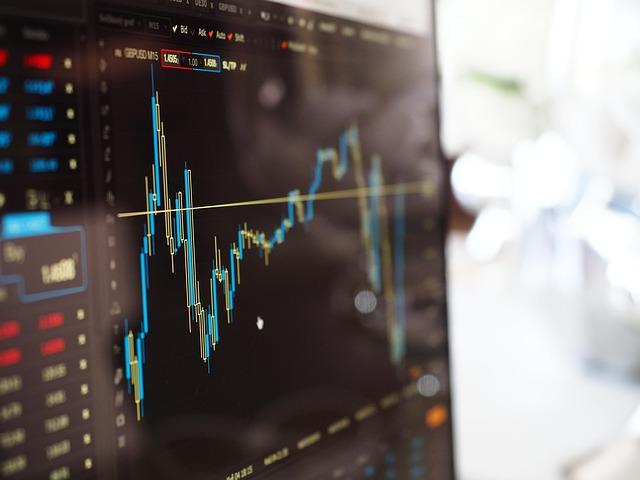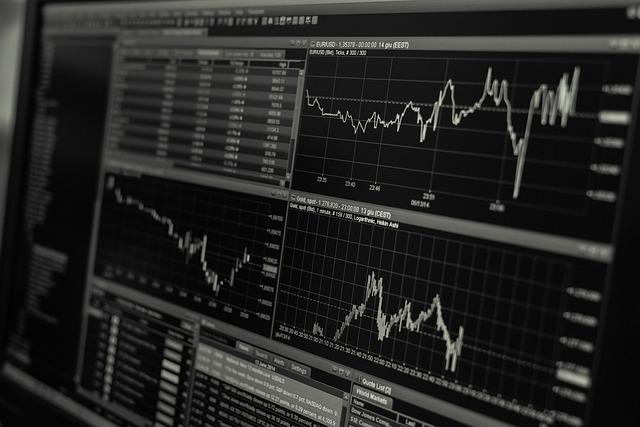If you’ve ever watched the pros trade and wondered how they seem to make the right moves almost instinctively, you’re not alone. Thinking like a trading expert isn’t some secret superpower-it’s a mindset anyone can develop with the right approach. In this post,we’re diving into how to train your brain,spot opportunities,and level up your trading game so you can make smarter decisions and maybe even start seeing those sweet wins more often. Ready to think like a trading pro? Let’s get into it!
Master the Mindset Shift from Casual to Pro Trader
Transitioning from trading as a casual hobby to operating like a seasoned pro starts with reshaping how you view the market and your role in it. It’s less about luck and more about a disciplined process. Rather of chasing every “hot tip,” pro traders rely on structure – mastering the art of patience, planning, and most importantly, self-control. Cultivating this mindset means embracing consistency over impulsiveness and replacing emotional reactions with calculated decisions. Remember, the market doesn’t care about your feelings; your job is to stay sharp, adaptable, and focused.
Here’s a quick mental checklist to help flip the switch:
- Set realistic goals: Aim for steady growth,not instant riches.
- Analyze your mistakes: Treat each loss as a learning possibility.
- Stick to your strategy: Don’t deviate based on noise or hype.
- Maintain emotional balance: Avoid the rollercoaster of hype and fear.
| Casual Trader | Pro Trader |
|---|---|
| Follows trends blindly | Creates and adapts strategies |
| Emotion-driven decisions | Emotion-managed trades |
| Chases quick wins | Focuses on consistent results |
| Minimal risk planning | Risk management is priority |
Breaking Down Market Moves Like a Pro Detective
when you dive into the market with a detective’s mindset, you’re not just watching prices – you’re uncovering *stories* hidden in every tick and volume spike. Think of each trade like a clue: patterns emerge, signals get stronger or fade, and suddenly, the noise transforms into meaningful data. The key is training your brain to spot inconsistencies, contradictions, and confirming hints, just like a pro sleuth putting together a puzzle. Pay attention to context, consider the ‘who’, ‘why’, and ‘when’ behind each movement, and you’ll start predicting the next chapters rather of just reacting to them.
To sharpen your market detective skills, build a routine that combines observation with analysis. Here’s a quick checklist to get you started:
- Track multiple time frames: Big trends frequently enough hide in smaller windows.
- Note volume surges: They often signal institutional interest or large orders.
- Cross-check news events: Confirm if market moves align with real-world catalysts.
| Clue Type | What It Means | how to Use it |
|---|---|---|
| Price Rejection | Buyers or sellers pushing back | Look for reversals or break confirmations |
| Volume Spike | Increased market participation | Validate trend strength or exhaustion |
| Gap Up/Down | Significant overnight news or sentiment change | Adjust stop-loss or entry points accordingly |

Mastering the art of smart risk management is key to making well-informed choices rather than impulsive decisions. Rather of fearing risks, view them as calculated moves where you control the outcomes. Consider breaking down your approach with simple steps like:
- Defining your risk tolerance: Know how much you’re willing to lose before entering any trade.
- Setting clear stop-loss limits: Protect your capital by deciding exit points ahead of time.
- Diversifying your investments: Spread out your bets to reduce exposure and smooth out volatility.
This mindset doesn’t just prevent reckless decisions, it sharpens your ability to spot opportunities and adapt fast when the market shifts.
| Strategy | Benefit | Example |
|---|---|---|
| Stop-Loss Orders | Limits loss automatically | Sell if drop > 5% |
| Position Sizing | Controls exposure per trade | Risk 2% of account balance |
| Diversification | Reduces overall risk | Mix stocks,bonds,crypto |
Building Winning Habits to Stay Ahead of the Trading Curve
Success in trading doesn’t happen by accident-it’s the product of consistency,discipline,and well-crafted routines. Start by cultivating daily habits that sharpen your analytical skills and emotional resilience. For example, dedicate time each morning to review key market news and price action, journal your trades to track progress, and practice mindfulness techniques to keep your emotions in check. These habits, repeated day in and day out, build a mindset that’s proactive rather than reactive, helping you anticipate market moves rather than just respond to them.
To keep your habits aligned with your goals, focus on small, measurable actions rather than big, overwhelming tasks. Here’s a quick checklist that can make a difference:
- Analyze one chart pattern daily to improve pattern recognition
- Review your trading journal weekly to identify strengths and weaknesses
- Set realistic daily goals-like limiting losses or maintaining a 2:1 reward-to-risk ratio
- perform a brief pre-market meditation or visualization to stay calm under pressure
| Habit | Benefit | Time Commitment |
|---|---|---|
| Daily Market Scans | Spot early opportunities | 15 minutes |
| Trade Journaling | Improve decision-making | 10 minutes |
| Mental Conditioning | Stay emotionally balanced | 5 minutes |
Leveraging Tools and Tech to Boost Your Trading Edge
In today’s fast-paced market, mastering the right tools can transform your trading from guesswork to precision strategy. From advanced charting software to AI-powered signal generators,adopting technology equips you with real-time insights and automated alerts that dramatically enhance decision-making. Consider integrating platforms that offer customizable dashboards where you can track multiple assets and indicators simultaneously – this kind of setup helps you respond to market shifts instantly without losing sight of your broader strategy.
Here are a few key tech components savvy traders swearing by:
- Algorithmic trading bots to execute trades faster than humanly possible
- Sentiment analysis tools that sift through social media buzz to gauge market mood
- Backtesting software to simulate your strategies against ancient data before you risk a dime
- Mobile apps for on-the-go tracking and alerts, so you never miss a trade opportunity
| Tool Type | Purpose | Popular Example |
|---|---|---|
| charting Software | Visualize price trends and technical indicators | TradingView |
| Algorithmic Bots | Automate trade execution | 3Commas |
| Sentiment Platforms | Analyze market mood from social channels | BuzzSumo |
| Backtesting Tools | Test strategies on historical data | MetaTrader 5 |
Q&A
Q&A: How to Think Like a Trading Expert and Up Your Game
Q: I’m new to trading-what’s the very first mindset shift I need to make?
A: Great question! The biggest shift is to stop thinking of trading as a quick-money scheme. Experts treat it like a skill-building marathon, not a sprint. Patience, discipline, and continuous learning are your new best friends.
Q: How do trading pros approach risk differently than newbies?
A: Pros don’t gamble; they manage risk.They know that protecting their capital is more important than hitting it big every time. That means setting stop losses, not chasing every “hot tip,” and sticking to a plan even when emotions run high.
Q: What kind of habits separate expert traders from the rest?
A: Consistency is king. experts journal their trades,review what worked and what didn’t,and stick to tested strategies. They don’t jump from one shiny method to another-they refine and adapt based on data.
Q: how critically important is technical analysis in thinking like a pro trader?
A: It’s a powerful tool but not the whole story. Technical analysis helps you spot trends and potential entry/exit points, but pros combine it with understanding market sentiment, news events, and broader economic factors.
Q: I often get overwhelmed by market noise. How can I focus like an expert?
A: Filter. Experts tune out distraction and focus on their strategy’s relevant signals.Set clear trading rules and stick to them. If it’s not part of your plan or proven system, it’s probably just noise.
Q: Can psychology really make or break my trading?
A: Absolutely! Even the best plan fails if your emotions get the best of you. Traders who think like experts cultivate emotional discipline-staying calm during losses and avoiding greed during wins.
Q: Any final tips to truly up my trading game?
A: Keep learning, stay humble, and embrace mistakes as lessons (not failures). Trading is a journey-twice the work,twice the fun. And remember: thinking like an expert starts in your head before it shows in your profit and loss.
In Summary
And there you have it – thinking like a trading expert isn’t some secret code reserved for Wall Street pros. it’s all about mindset, strategy, and a little bit of grit. Start training your brain to spot patterns, manage risks, and stay cool under pressure, and you’ll be stepping up your game in no time. Remember, even the best traders started somewhere, so don’t sweat the mistakes - learn from them and keep pushing forward. Ready to level up? Your trading journey just got a whole lot more exciting!











